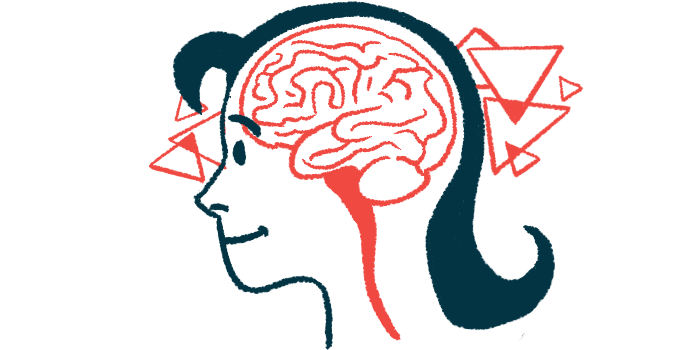Effects on Different Neurons May Explain How Symptoms Evolve
In Huntington's disease, emotional disturbances precede motor impairments
Written by |

In Huntington’s disease, neurodegeneration in a brain region called the striatum differs not only across different types of neurons, but also across distinct striatal compartments, according to a study of brain samples from a Huntington’s patient and mouse models.
The striosomes, the striatal compartment involved in regulating mood, was more affected than its counterpart, the matrix, which is more involved in motor functions.
These findings may shed light on why Huntington’s symptoms tend to progress as they do, with emotional disturbances occurring first and motor issues developing later, the researchers noted.
“As many as 10 years ahead of the motor diagnosis, Huntington’s patients can experience mood disorders, and one possibility is that the striosomes might be involved in these,” said Ann Graybiel, PhD, the study’s co-senior author and a professor at Massachusetts Institute of Technology (MIT), in a university news release.
The study, “Transcriptional vulnerabilities of striatal neurons in human and rodent models of Huntington’s disease,” was published in Nature Communications.
Huntington’s effect on movement, emotion
A feature of Huntington’s is the progressive impairment and death of neurons in certain regions of the brain. A central region of the brain called the striatum, which helps relay signals that control movement and emotion, among other functions, is among the hardest hit in Huntington’s.
Neurons in the striatum can be broadly divided into two types: D1 neurons, which send “go” or activating signals, and D2 neurons, which send “no-go” or suppressive signals. It’s well established that D2 neurons are more vulnerable to Huntington’s-related damage, tending to die first.
The striatum is divided into two compartments — the striosomes and the matrix — with distinct neurochemical signatures and neuronal connections.
The striosomes form a three-dimensional labyrinth-like structure that wind through the matrix compartment. Striosome neurons are generally more connected to the limbic system, a group of brain circuits that help regulate emotion. By contrast, matrix neurons are usually more connected with brain circuits that regulate movement.
Based on these differences, and the typical mood-to-motor progression of symptom manifestation, some researchers have hypothesized that neurons in the striosomes may be more vulnerable to Huntington’s-related damage than those in the matrix.
The thought is that early damage in the striosomes could trigger emotional problems, while motor issues don’t become apparent until later when the matrix neurons become severely damaged.
To test this hypothesis, Graybiel and colleagues at MIT and PyschoGenics performed single-cell transcriptomic analyses on striatum samples from a deceased early Huntington’s patient and two mouse models of the disease. All samples were collected from males. Transcriptomics is an overall assessment of genetic activity, determining the extent to which different genes are “turned on or off.” Transcriptomic differences can be used to differentiate between D1 and D2 neurons, and also between striosome and matrix neurons, based on the activity of particular marker genes.
Results showed, in line with prior results, D2 neurons showed more dysregulation than D1 neurons. Also, D2 neurons in striosomes were the most lost, followed closely by D1 neurons in striosomes, and then by matrix D2 neurons.
“This pattern indicated a clear preferential vulnerability of striosomal [neurons] in HD [Huntington’s disease], alongside the well-known D2-predominent vulnerability in this disorder,” the researchers wrote.
Changes in striosomes, matrix
Despite being affected differently, the D1 and D2 neuron populations were still largely distinct in their gene activity. By contrast, striosome and matrix neurons appeared to be losing their molecular signatures.
Striosome neurons showed fewer striosome markers and more matrix markers, while matrix neurons produced fewer matrix markers and more striosome markers.
“Overall, the distinction between striosomes and matrix becomes really blurry,” Graybiel said.
These findings showed “the accentuated loss of transcriptomic identities between striosomes and matrix is a conserved signature across human HD patient and murine HD models,” the researchers wrote, adding “of the two classic axes of [neuron] classification in the striatum, the S-M [striosome-matrix] axis is more imbalanced than the D1-D2 axis” in Huntington’s disease.
The scientists noted that the loss-of-identity effect was generally more pronounced in the striosomes than the matrix and in both compartments tended to affect D2 neurons more than D1.
These findings are broadly consistent with the idea that striosome neurons are more vulnerable to Huntington’s-related damage, supporting the hypothesis that early damage to these cells could contribute to early emotional disturbances in Huntington’s.
However, the scientists emphasized that because they looked at brain samples from one point in time, more research is needed to confirm how these changes progress over time and how it connects to Huntington’s symptoms. They said understanding these processes better could reveal new therapeutic strategies to protect the most vulnerable cells from early damage.
“Currently there are limitations in how to translate these findings to a clinical level. New methods, more cases, and deep study of conserved properties of the D1-D2 and S-M axes could well point to developmental vulnerabilities that could inform the clinic,” the researchers wrote, adding they believe the findings may also help understand other neurodegenerative diseases better.
“There are many, many disorders that probably involve the striatum, and now, partly through transcriptomics, we’re working to understand how all of this could fit together,” Graybiel said.






